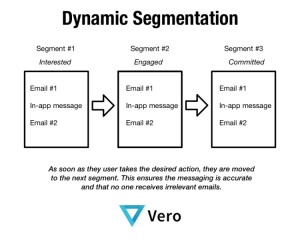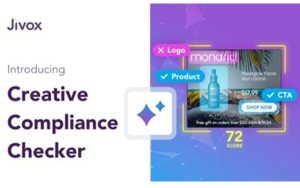It’s time to move on from outdated lead-centric strategies and tactics. B2B organizations should focus on buyer and account engagement.
B2B marketing leaders are at a crossroads. Organizations demand that efforts must continue to have a direct impact on the sales pipeline and company revenue. But the go-to-market (GTM) strategies, systems and plays many teams use are not connecting with how buyers and companies research and make purchase decisions.
To predictably generate revenue and customers in today’s digital-first world, marketing and GTM leaders are rethinking and reformulating demand strategies, tactics and mindsets that drive and contribute to pipeline and revenue.
A demand generation makeover is required because business relationships and buyer-solutions alignment are not working when a demand transaction, automation or quantity approach is applied. Yet, too many of us are still focused on capturing lead volumes to hit quotas on websites, through forms, at events and on social platforms — even before we have delivered value to audiences, prospects and customers.
This is not an “MQL is dead!” rally cry. Instead, the imperative is to let go of ingrained unhealthy habits starting with:
- The buyer/lead/audience “capture” vs. “generate” demand mindset.
- The attribution obsession for proving and gaining credit vs. measurement to increase performance and engagement.
- Chasing sales-marketing alignment by serving sales vs. an integrated effort that delights buyers and accounts.
The “lead capture” mindset creeps back in, even for organizations using models such as frictionless forms, artificial intelligence (AI)- and machine learning-powered propensity models and buyer and account intelligence.
For example, AI identifies accounts and intent shows in-market account activity and buyer signals, yet we still use automated email and three-cadence BDR scripts to engage buyers. These myopic approaches are holding back organizations from generating real demand from best fit, opportunity customers and accounts.
Let’s break down and, in turn, transform the three bad habits outlined above into new disciplines to improve our ability to identify, engage, delight and convert prospects into customers consistently.
Dump the ‘lead capture’ mentality and turn up the engagement-first approach
Capture: take into one’s possession or control by force.
Similar words and phrases: take prisoner, seize, apprehend, catch.
Oxford Dictionary
To get to the root cause of the “capture” mindset, we would need a cross between an anthropologist and a therapist. But in simple terms, it starts with B2B marketing viewing sales as their customer. Marketing has been so focused on serving sales, “marketing-sales alignment” and generating volumes of leads to make sales pros productive that today’s demand effort has stalled.
To ditch this mindset, the best-performing marketing teams are partnering with sales with a joint focus on customer preferences, account needs, pains, requirements and how to integrate their efforts.
Also contributing to the demand challenge is marketing automation. As marketing’s central system of record, it is still being unleashed to generate, store and score leads captured on forms through third-party syndication, webinars and email blasts. The goal? To hit marketing qualified lead (MQL) quotas.
Capturing is vital in the process but starting with a “capture first, sort later” mindset is not buyer-focused. Nor does it allow for an engaging experience as professionals research solutions and options. Too often, we develop our processes and programs to capture before we add value to the prospective customers to assist in what they need and are looking for.
Here’s the good news. Based on observations from a handful of conferences this month, we see a shift to deploying more engagement-focused methods. We witnessed examples of:
- Intelligence-informed timely outreach.
- Using customer-preferred channels with buyer-identified content options.
- A focus on increasing engagement with in-market and engaged accounts.
All a clear move away from lead capture and random phone calls. While not perfect, we are seeing more teams leave capture island and move toward timelier buyer and buying engagement strategies in motion across marketing and sales.
Stop chasing attribution: Obsess over customer experience and engagement metrics
A lead capture-centric approach is made worse due to an overfocus on attribution. B2B buying and selling processes are complex and dynamic. They involve multiple people tied to the business model and transformational company change initiatives. Thus, it does not make sense to associate every tactic, campaign and touchpoint with every dollar spent. This chase is a never-ending game of trying to get credit for a lead versus measuring investment more holistically for impact.
To be clear, B2B marketing must be accountable for marketing spend return on investment (ROI). High-performing teams start with outcomes — revenue and pipeline generated — and work back to understand all touchpoints and channels they have engaged with over a specific time period.
This effort requires analytics across the entire buyer’s journey and sales and marketing efforts to understand buyer and account behaviors. Predictable demand results also need to apply buyer and account intelligence to present the right information and options to meet the needs of audiences/buyers/visitors/attendees.
Dump sales-marketing alignment obsession and elevate your go-to-market strategy across the organization
Today, we are constantly trying to align sales and marketing around strategies, campaigns or plays. Awkwardly, we ask marketing pros to take on sales roles (account research, cold calling, follow-up, discovery meetings and qualification) and sales pros to become marketers (run campaigns, craft engaging communications and be social media pros).
Because both teams are using technology and data, they often build separate tech stacks, workflows, processes and data models. The unintentional result is an onslaught of communications and outreach that turns off buyers and squashes the buying groups’ experience.
Marketing-sales alignment is thinking too small. Successful B2B teams are developing GTM strategies that connect sales, marketing, customer success, product and operations to meet buyers and accounts wherever they are in their research and buying journey.
Sales, marketing and customer operations should be unified into a single team with integrated workflows, connected systems and buyer and account intelligence. This unified GTM strategy aligns resources internally to deliver agility and scale, keeping up with the dynamic nature of how companies and buying teams make decisions. This cross-functional thinking is essential for today’s buying-selling financial agreement — software and services subscriptions that live in the cloud and are up for renewal frequently.
Moving on from the ‘lead capture’ mindset
No excuses. No pacifiers. It is time to let go of capturing leads. This demand shift requires marketing to move on from outdated lead-centric strategies and tactics. On the contrary, B2B organizations should focus on buyer and account engagement.
To make this happen, B2B organizations — not just sales and marketing — must develop and embrace a more holistic GTM approach powered by integrated, buyer- and account-centric strategies, roles, data and systems.
No doubt, this shift takes courage, grit and change management. With the progress we are seeing, I have more confidence in the demand marketing profession than ever.
The post From capturing leads to generating demand: Breaking down B2B marketing’s pivot appeared first on MarTech.
MarTech(11)
Report Post





